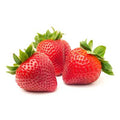Union Springs, Alabama, the home office of Bonnie Plants, is also the heart of what you might call Collard Country. This time of year gardens are dotted with the leafy greens waiting for the next frost to sweeten the newest leaves. We are glad that the rest of the country is discovering this nutritious green.
What are collards, and where did they come from?
Collards belong to the cabbage, or cole family, along with broccoli, Brussels sprouts, cabbage, kale, and kohlrabi. They have large, smooth, waxy green leaves that have a mild flavor when kissed by frost. Although collards also grow in summer, their flavor is always better in cold weather; the leaves are surprisingly cold hardy, generally tolerating temperatures in the teens.
Collards made their journey to the South from Africa. Accounts vary as to when and where the first collard plants arrived in the American colonies, but it is clear that the southern method of cooking collard greens, in a pot of water until they are soft, comes from the foodways that resourceful African plantation workers developed under slavery. Stewed greens were an important source of nutrition and have since endured as a signature Southern staple. For you foodies who would like to know more about the cultural history of this green, check the entry about collards in volume 4 of the Encyclopedia of Southern Culture published in 1989 by the University of North Carolina and the University of Mississippi.
Today collards are appreciated for their historical, cultural, and culinary contributions and are being cooked in a variety of inventive ways including in soups, casseroles, and mixed with many other meats, seafood, and vegetables. You may even toss tiny, tender young leaves into a salad for texture, color, and added vitamins.
How do you cook traditional collard greens?
"A mess" of southern collard greens is traditionally cooked in water with some kind of meat, usually pork (such as a ham hock, ham bone, or fatback) until the leaves are tender. A lighter version calls for smoked turkey. Some recipes add onions and various seasonings, and many folks sprinkle cooked collard greens with hot pepper sauce or vinegar. Cornbread is an important accompaniment, essential to sop up the nutritious "pot likker," liquid left in the pot from cooking the greens. Many Southerners hold to the tradition of eating greens and black-eyed peas on New Year's Day, said to bring prosperity and luck in the year to come.
Collards are good for you!
Apart from the tastiness of collards and the ease with which you can make them part of your garden, yet another good reason to grow and eat collards is the health benefits they offer. Would you believe that one-cup of cooked collard greens contains 1,045% of your daily Vitamin K needs? It's true, along with 308% of your Vitamin A and 58% of your Vitamin C. They are rich in antioxidants and the phytonutrients found in collards are said to play a part in resistance to a variety of cancers.


How do you grow collard greens?
Collards are a cool-weather crop planted in spring and fall. In zones 8 and southward, fall-planted collards continue to thrive in winter. They grow well in beds or pots, in full sun and fertile, well-drained soil. In the north, a tall cold frame can provide winter harvests.
Although the time for fall planting has passed, it's not too early to begin thinking about your spring garden. Collards are among the first plants to appear on Bonnie racks in the spring. Early planting is good so that they can mature while the weather is still cool; collards become more strongly flavored as the weather warms up, but plants will stay in the garden through summer and yield sweeter harvests again in the fall! Watch our how-to video for step-by-step instructions on planting collards and their cole-crop cousins.
So, get ready to enjoy some fresh collard greens, and make whatever part of the country you call home Collard Country!




 Herbs
Herbs
 Vegetables
Vegetables
 Fruit
Fruit
 Flowers
Flowers
 Succulents
Succulents


